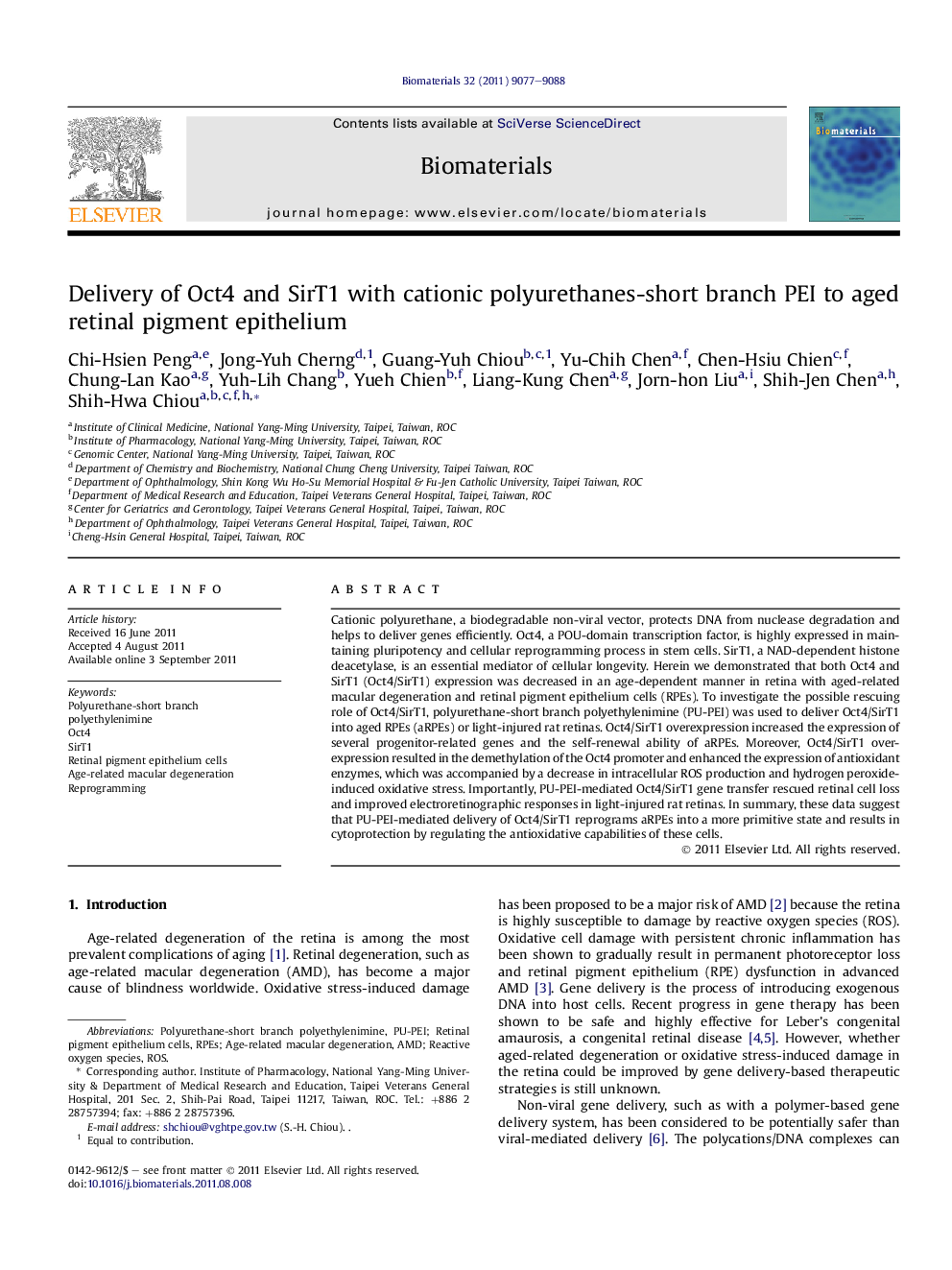| Article ID | Journal | Published Year | Pages | File Type |
|---|---|---|---|---|
| 7129 | Biomaterials | 2011 | 12 Pages |
Cationic polyurethane, a biodegradable non-viral vector, protects DNA from nuclease degradation and helps to deliver genes efficiently. Oct4, a POU-domain transcription factor, is highly expressed in maintaining pluripotency and cellular reprogramming process in stem cells. SirT1, a NAD-dependent histone deacetylase, is an essential mediator of cellular longevity. Herein we demonstrated that both Oct4 and SirT1 (Oct4/SirT1) expression was decreased in an age-dependent manner in retina with aged-related macular degeneration and retinal pigment epithelium cells (RPEs). To investigate the possible rescuing role of Oct4/SirT1, polyurethane-short branch polyethylenimine (PU-PEI) was used to deliver Oct4/SirT1 into aged RPEs (aRPEs) or light-injured rat retinas. Oct4/SirT1 overexpression increased the expression of several progenitor-related genes and the self-renewal ability of aRPEs. Moreover, Oct4/SirT1 overexpression resulted in the demethylation of the Oct4 promoter and enhanced the expression of antioxidant enzymes, which was accompanied by a decrease in intracellular ROS production and hydrogen peroxide-induced oxidative stress. Importantly, PU-PEI-mediated Oct4/SirT1 gene transfer rescued retinal cell loss and improved electroretinographic responses in light-injured rat retinas. In summary, these data suggest that PU-PEI-mediated delivery of Oct4/SirT1 reprograms aRPEs into a more primitive state and results in cytoprotection by regulating the antioxidative capabilities of these cells.
